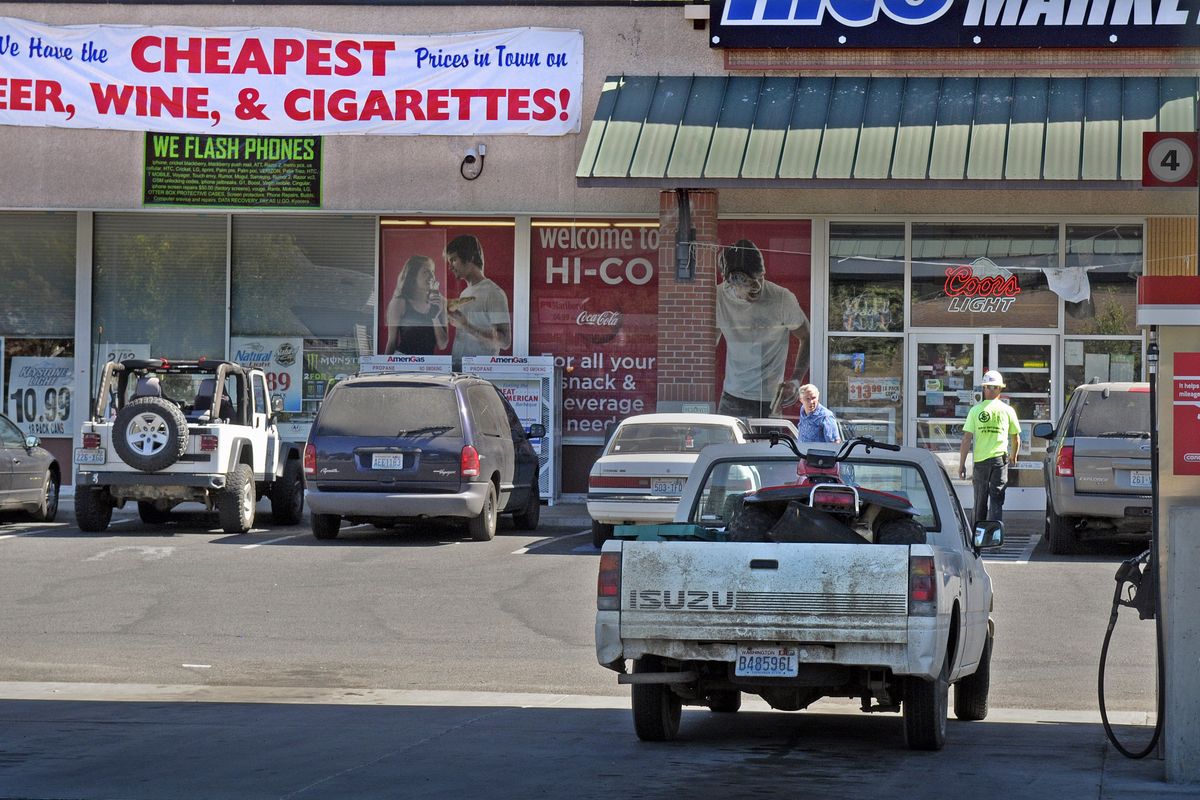Ban sought on high-octane beer sales in East Central
Hai's Mini Market and the HiCo at Ninth Avenue and South Perry Street could be affected by limits on alcohol sales in East Central. (File)
Getting drunk in East Central could soon become more expensive.
Spokane Mayor David Condon this week signed a petition asking the Washington State Liquor Control Board to ban the sale of most single containers of beer with alcohol content of at least 5.7 percent in the neighborhood.
The final decision will be made by the state board. A hearing on the matter hasn’t yet been scheduled.
The Spokane City Council approved the creation of an alcohol impact area in East Central in September 2009 and expanded its boundaries last year to reach the eastern city limits at Havana and to extend into the South Perry Business District.
The designation of East Central as an impact area allowed the city to ask owners of the 13 stores that sell high-octane beer in the neighborhood to voluntarily stop selling the drinks. None have signed the agreement, though Fred Meyer on Thor has significantly limited its selection, said Senior Police Officer Max Hewitt, who oversees alcohol impact areas.
With the boundaries in place for more than six months, the city is allowed to petition for a mandatory ban and will submit a proposed list of prohibited products. That list will be the same as what the Liquor Control Board has agreed to ban in downtown Spokane under the city’s first alcohol impact area. Another impact area in West Central was created last year but hasn’t become mandatory; no stores there have voluntarily agreed to stop selling high-octane beer.
The East Spokane Business Association supports moving to a mandatory ban, said Jim Hanley, past president and member of the group. He said since the downtown ban, businesses and residents have noticed a significant increase in problems associated with drunkenness, including public urination, vomiting on the sidewalk and people passing out in doorways and alleys.
“The problem just exploded out of downtown,” said Hanley, who owns Acme TV on Sprague Avenue.
Since the downtown ban on high-octane beer sales, calls for emergency service related to intoxication have increased in East Central, according to the city’s petition for the ban. Spokane Fire Department medics responded 95 times in East Central to alcohol-related incidents in 2011. That was up from 46 in 2009.
Hanley said he has little sympathy for stores that sell the high-octane beer.
“It’s like giving them anti-freeze,” Hanley said about the customers who buy the beverages. “It’s killing them one can at a time.”
But Hai Ho, who owns two markets that would be affected by a ban in East Central, said stores shouldn’t be vilified for problems caused by individuals. He said banning the sale of the beer in one area won’t stop people from drinking. They’ll just go somewhere else to buy high-octane beer, he said.
He said his bottom line will be hurt not only by the restrictions on beer sales but by a drop in sales of products that people purchase while in the store to purchase beer.
“I just don’t know why the city wants to do this,” said Ho, who stressed that a ban would result in a decline of taxes.
Some City Council members have expressed interest in pursuing a citywide ban, but rules specifically say an entire city can’t be placed within an alcohol impact area.
Ed McCarron, director of the House of Charity, a downtown shelter and community center for the homeless and people with low incomes, said he hasn’t noticed much decline in problems associated with chronic inebriation since the downtown ban went into effect.
McCarron estimates that about 30 to 40 percent of the population at the House of Charity has struggled with alcoholism. He said those who struggle with alcoholism appear to prefer fortified beer.
“The guys are still getting the high-octane (beer). I don’t know where they’re getting it,” he said. “There’s no Bud Light. It’s the High Gravity stuff.”
Bud Light’s alcohol content is 4.2 percent; Schlitz High Gravity’s is 8.5 percent.

